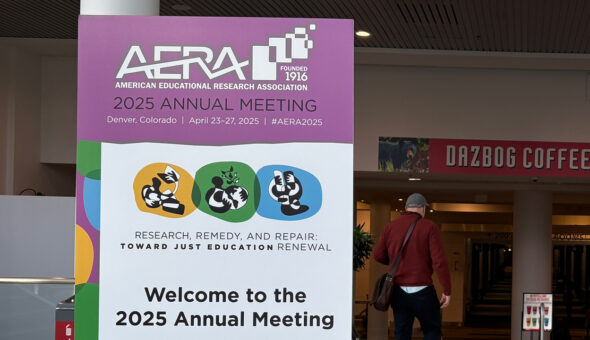This blog is from Natalia López-Hornickel, PhD Research Programme in Education.
Imagine being a teenager in one of the most unequal regions in the world (Inter-American Development Bank, 2024), where there is an extreme concentration of resources at the top of the distribution (Torche, 2014), with repercussions in educational segregation (Torche, 2010).
Besides, the region where you live – even when it has already been around 40 years since the end of dictatorships – faces political instability, and many people still believe that authoritarianism is a solution to social challenges (Schulz et al., 2018). This replicates in young people, where 69% believe a dictatorship can solve security problems. (Schulz et al., 2018)
Considering that lower educational attainments are associated with prejudice, such as sexism (Carvacho et al., 2013), and authoritarianism is a recognised predictor of homophobia and sexism (Christopher et al., 2008), how would it be possible to adhere to gender equity in this scenario? It seems challenging. What about adolescents? How would they experience a society that seems to go behind?
Gender equity in Latin America is still in progress. Even when women participate more in public and labour spaces, there are strong cultural restrictions based on the traditional role of women (Cotter et al., 2011; Sánchez et al., 2021). According to the report by Sandoval-Hernández & Carrasco (2020), only 32% of adolescents adhere to gender attitudes in the expected threshold of full adherence. This contrasts with European countries, such as Denmark, where 71% of students reach this point. Previous analyses have also revealed the heterogeneity of profiles of adherence to gender attitudes in this region. For instance, 63.6% of adolescents in Mexico think women should not participate in politics, while in Chile and Colombia, 75% and 79% fully adhere to gender equity (results with ICCS 2016) (López-Hornickel & Sandoval-Hernández, 2023).
The great question is, can schools do something about it? The recently published paper “It is not just your opinion. gender equity endorsement of Latin American students and their peers at school” (López-Hornickel et al., 2024) contributes to answering this.
First, schools seem influential in fostering attitudes toward gender equity, accounting for 19% of the variance in student gender equity endorsement. This shows that schools can shape student’s beliefs and values beyond family influences.
Second, schools that foster open discussions about political and social issues can contribute to a positive association with gender equity. And counteract the effects of authoritarianism. Open classroom discussion as a teaching practice promotes critical thinking and tolerance.
Third, civic knowledge can be critical, as a higher level of this understanding is associated with a higher support for gender equity. Higher civic knowledge equips students with the tools to critically engage with societal issues, including gender inequality.
Finally, considering the opposite case, schools with authoritarian ideological climates are negatively associated with gender equity attitudes, even with students with otherwise egalitarian beliefs. This highlights the importance of fostering democratic and inclusive practices at school.
These results can be significant to consider regarding the educational context of the Latin American region. Latin America’s structural inequities and authoritarian legacies present formidable barriers. Students from higher socioeconomic backgrounds are more likely to endorse gender equity, reflecting disparities in access to quality education.
Adolescents are not only developing their own values but also shaping the future of their societies. Research shows that societal attitudes toward sexism directly influence the level of gender equity achieved over time (Brandt, 2011). However, schools can act as counterbalance spaces by promoting open discussions and civic education, even in underprivileged settings. Educational systems, therefore, can play a crucial role in setting societies’ trajectory.
References
- Brandt, M. J. (2011). Sexism and gender inequality across 57 societies. Psychological Science, 22(11), 1413–1418. https://doi.org/10.1177/0956797611420445
- Carvacho, H., Zick, A., Haye, A., González, R., Manzi, J., Kocik, C., & Bertl, M. (2013). On the relation between social class and prejudice: The roles of education, income, and ideological attitudes. European Journal of Social Psychology, 43(4), 272–285. https://doi.org/10.1002/ejsp.1961
- Christopher, A. N., Wojda, M. R., Abraham, K., Hauser, J., Marek, P., & Walter, M. (2008). SOCIAL DOMINANCE ORIENTATION, RIGHT-WING AUTHORITARIANISM, SEXISM, AND PREJUDICE TOWARD WOMEN IN THE WORKFORCE. Psychology of Women Quartely, 32, 65–73.
- Cotter, D., Hermsen, J. M., & Vanneman, R. (2011). The end of the gender revolution? Gender role attitudes from 1977 to 2008. American Journal of Sociology, 117(1), 259–289. https://doi.org/10.1086/658853
- Inter-American Development Bank. (2024, March 6). IDB | The Complexities of Inequality in Latin America and the Caribbean. The Complexities of Inequality in Latin America and the CaribbeanThe Complexities of Inequality in Latin America and the Caribbean. https://www.iadb.org/en/news/complexities-inequality-latin-america-and-caribbean
- López-Hornickel, N., Carrasco, D., Lay, S., & Treviño, E. (2024). It is not just your opinion. Gender equity endorsement of Latin American students and their peers at school. Large-Scale Assessments in Education, 12(1), 45. https://doi.org/10.1186/s40536-024-00235-6
- López-Hornickel, N., & Sandoval-Hernández, A. (2023). Profiles of Attitudes Toward Gender Equality among Latin American Adolescents. Pensamiento Educativo: Revista de Investigación Educacional Latinoamericana, 60(2). https://doi.org/10.7764/PEL.60.2.2023.6
- Sánchez, B. P., Concha-Salgado, A., Fernández-Suárez, A., Juarros-Basterretxea, J., & Rodríguez-Díaz, F. J. (2021). The gender role attitude scale (Gras) as an alternative for the crisis in the measurement of attitudes towards gender roles in latin america: A study in chilean university students. Anales de Psicologia, 37(3), 567–576. https://doi.org/10.6018/analesps.438431
- Sandoval-Hernández, A., & Carrasco, D. (2020). A Measurement Strategy for SDG. Thematic Indicators 4.7.4 and 4.7.5 Using International Large Scale Assessments in Education. UNESCO. https://tcg.uis.unesco.org/wp-content/uploads/sites/4/2020/06/Measurement-Strategy-for-474-and-475-using-ILSA_20200625.pdf
- Schulz, W., Ainley, J., Cox, C., & Friedman, T. (2018). Young People’s Views of Government, Peaceful Coexistence, and Diversity in Five Latin American Countries IEA International Civic and Citizenship Education Study 2016 Latin American Report.
- Torche, F. (2010). Economic crisis and inequality of educational opportunity in Latin America. Sociology of Education, 83(2), 85–110. https://doi.org/10.1177/0038040710367935
- Torche, F. (2014). Intergenerational mobility and inequality: The Latin American case. Annual Review of Sociology, 40, 619–642. https://doi.org/10.1146/annurev-soc-071811-145521
Respond



